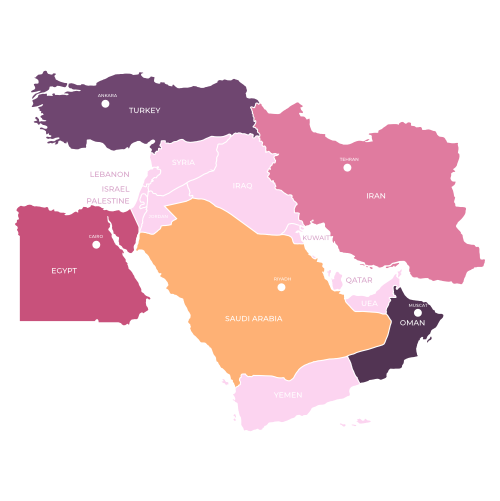
Asthma in India – What’s the State of Play?
The below content is derived from research done using sources available on the internet. Safey Medical Devices Inc and its subsidiaries do not take any responsibility for the accuracy of the content. No medical decision should be taken on the basis of below content without consulting with your Medical Practitioner.
More deaths linked to asthma occur in India than anywhere else in the world. Find out why asthma in India is so prevalent as we investigate the state of play.
There are some 300 million people with asthma in 2018. This common inflammatory condition of the airways affects people of all ages and ethnicities. Alarmingly, a tenth of the world’s asthmatics are said to live in India.
Thirteen of the world’s most polluted cities are located in India, according to the World Health Organisation’s (WHO) ambient air pollution database. There are grave concerns that an asthma epidemic is building right here in India.
According to Dr Neeraj Jain, chairman, department of chest medicine, Sir Ganga Ram Hospital in New Delhi, the number of individuals being diagnosed with asthma “for the first time with no family history is definitely going up”.
The WHO believes between 15 to 20 million people suffer with asthma in India today. Although alternative research suggests that figure could be as high as 30 million.
India: Home to the most asthma-related deaths in the world
The WHO has also estimated that India is the country with the highest number of deaths linked to chronic respiratory diseases on the planet. The WHO believes the most asthma-related deaths in the world occur in India. Meanwhile India ranks second only to China for the highest number of chronic obstructive pulmonary disease (COPD) related deaths in the world too.
Asthma is not only a public health issue for high-income, well-developed countries, it can occur in all nations, regardless of how well-developed they are. Changes in India’s environment and the evolution of the global environment are being blamed on the rise of asthma diagnoses.
Genetic predilection is no longer the primary cause for developing asthma. Air pollution, particle dust and first and second-hand smoking are three key causes of asthma symptoms.
The prevalence of childhood asthma in India
Recent analysis of more than a dozen epidemiological studies indicated that the average prevalence of asthma among children was 7.24%.
The onset of childhood asthma in India has risen sharply in the last decade. A poll of India’s biggest community of qualified doctors, Curofy, found that more than four-fifths (82%) of doctors believe environmental pollution is the root cause of the prevalence of childhood asthma in India.
Of course, self-management of asthma symptoms is essential among patients. However, this poses an issue among young children that are diagnosed who may struggle to understand the seriousness and chronic nature of their disease. Education on medication adherence is therefore essential to make young ones aware of the disease and to teach them how asthma medicine can help to ease symptoms and improve their quality of life day-to-day.
Anti-asthma medication sales on the rise
Sales of anti-asthma medication throughout India soared by more than two-fifths (43%) in the last four years. In 2016, there was a 15% growth in anti-asthma prescriptions among adults and young children. There is no doubt that India’s lungs increasingly need treatment to prevent frequent asthma attacks.
The need for anti-asthma medication is because of air pollution in both urban and rural areas. Some 700 million women and children in rural areas inhale smoke from biomass and kerosene stones designed to burn wood, animal dung, crops and coal. These stoves also emit carbon particles, as well as nitrous and sulphur oxides, that can accelerate the onset of asthma symptoms.
Why India’s air pollution is linked to asthma
In the east of India, climatic changes are said to bring about the highest percentage of asthma exacerbation triggers (46%). In the north of India, climatic changes (62%) have also been attributed to the highest number of asthma exacerbations. It’s also worth noting that in the north, chemicals used daily (47%) and pollen and dust particles (48%) were also high-ranking triggers.
However, in the west of India, lifestyle habits (40%) are said to be one of the highest triggers of asthma exacerbations. This area includes the capital, New Delhi, as well as Mumbai and Jaipur – three of the largest urbanised and westernised cities in India.
In the south of India, climatic changes (49%) and pollen and dust particles (47%) were said to be the most common triggers of asthma exacerbations.
Road traffic and industrial plants that regularly burn fossil fuels are India’s primary sources of air pollution. Although there’s no doubt that tobacco smoke and heightened exposure to chemical irritants can also exacerbate asthma symptoms.
Air pollution is said to be India’s fifth-biggest killer, claiming 1.5 million lives annually. Air quality is particularly poor in western India. New Delhi’s air quality was found to be the worst of all India’s cities, according to the WHO. However, more rural areas of Gwalior in Madhya Pradesh and Raipur in Chhattisgarh recorded even worse levels of air pollution than New Delhi.
Inhaler adherence is key in India
More than two-thirds (67%) of Indian asthmatics report a high frequency of asthma exacerbations, resulting in significant limitations in their functional and emotional wellbeing.
This suggests there is a poor level of control of asthma symptoms and disappointing levels of patient adherence of inhaled corticosteroids and bronchodilators.
The adherence of inhalers is a cost-effective strategy for the global healthcare industry. Not only because this will help to minimize individual asthma symptoms, but collectively it can provide an economic benefit – or cost-saving – to national economies.
At Safey, we believe our industry leading smart inhaler technology can improve the efficiency of medication adherence among asthma sufferers. Our smart Bluetooth-enabled inhalers not only help you with your inhaler technique, they communicate with caretakers and clinicians to ensure your lungs are receiving the medicine they need to improve your airways.
By controlling your asthma symptoms, we can minimise the economic and emotional burden on healthcare systems, whilst helping asthma sufferers to lead a normal, happy lifestyle.
Put simply, an asthma patient in an emergency room is a failure in medical care. Safey’s smart hardware and software can help to manage asthma exacerbations easier and more effectively for patients and medical practitioners alike.









